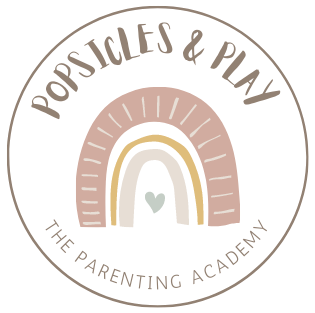
We truly started on the Respectful Parenting journey about 1+ year back, when T was 1.5 years old.
Parenting is hard enough as it is. With Respectful Parenting, it truly takes a lot of patience, endurance, and self-awareness to implement the principles.
I would say we integrated Respectful Parenting in a staggering manner into our home. There were a few times when we fell off the wagon, especially when we were stressed or exhausted from work. But it helps when you have a partner-in-crime in this to support and encourage each other.
We make sure we are on the same page in terms of parenting styles.
By “we”, I’m referring to my Husband and I. We are the parents, and the main caregivers of T. To be able to successfully implement Respectful Parenting principles, I have to make sure that he believes in it as much as I do.
My Husband hates reading books, he can never go past 1 chapter in a book without falling asleep. So from the numerous books I’ve read on Respectful Parenting, I chose the simplest, most straight-forward one for him – “Positive Parenting” by Rebecca Eanes. I highlighted the key points in the book, and asked him to go through those.
I also illustrated a few examples of how to respectfully parent T during our day-to-day lives. It’s always easier to explain a concept with real life examples.
It’s crucial that you and your other half believe in and are willing to implement the same parenting style. If there are contradictory styles between the both of you, it will be very confusing for the child. Ensuring your other half is on the same side as you will also help in this journey since you can support and encourage each other along the way.
We practice being calm and keeping calm.
Somehow it’s so easy to flare up with your child. When friends, colleagues, acquaintances, even strangers piss you off, you find that you can hold your temper and hide your irritation well most of the time. But with a child, every time he does something that ticks me off, my knee-jerk reaction is to flare up at him.
I had to constantly remind myself to be patient and to be respectful.
When I’m on the brink of flaring up, I always take a few seconds to compose myself before talking to him. Sometimes I would walk away for awhile before coming back to him. I would remind myself that he’s only 2, and he’s probably having an even harder time with his emotions than I am and I need to help him through it.
If you can’t keep your cool, you will find it very challenging to implement positive discipline and positive parenting principles in general.
We take things slower.
Implementing Respectful Parenting means that you have to be extremely patient. And being patient means you cannot be rushing through the tasks with your child.
We always buffer a lot of time when it comes to managing T. Children really take their time to “stop and smell the roses”, as they say. They take their time to walk to the bathroom for their shower, they take their time to eat, they take their time to get dressed, they take their time to keep their toys.
Many a times, I find myself feeling extremely frustrated because he’s not doing things as fast as I wanted him to. But then I realized, we adults are living life at a pace much too hurried. We got to learn from these kids. So we started slowing things down.
Whenever we are going out with T, we start to get him ready way before the time that we need to leave. This also buys us time to parent him respectfully. For eg, if he’s very focused with playing with his toys, I could give him a heads-up and I could allow him to finish the activity, before letting him get dressed independently (another activity that takes up a lot of time). If you don’t allow for enough time to do these, you will be rushing him along constantly while feeling very frustrated, and more likely than not, you will end up dragging a crying screaming child from his unfinished activity to get changed.
We give him a heads-up all the time.
T, like every other child, is very focused whenever he’s playing. And T, like every other human being, hates it when someone else stops him in the midst of his activity. So we always give him a heads-up about what is to come.
When he wakes in the morning, we tell him what we are doing for the day and where we are going. During the day, we always tell him what the next activity is, no matter how mundane the activity is. “Ok, you will need to use the potty after this”, “We will shower and get dressed after this”, “You will take your vitamins after this, before we go out”…
Wouldn’t you want to know what’s planned for you for the day? It’s the same with children.
We do the countdown a lot with T.
One of the most successful techniques we have implemented with T is doing a count down for him.
“I’m going to count to 5, and when I do, I would like you to follow me to the bathroom”.
”You have 10 more minutes to play with your toys.” “Ok, now 5 more minutes.” “Ok, now I’m going to count to 5, and I would like you to keep those toys.”
”You can finish up your current activity. After that I’m going to count to 5, and please go wear your shoes.”
With a count down, you have to call out the consequences too. And you have to ensure that you implement the consequences every single time. If you don’t, the count down will cease to work.
”I’m going to count to 5, and when I do, I would like you to follow me to the bathroom. Otherwise, I will have to carry you there myself.”
”Ok, now I’m going to count to 5, and I would like you to keep those toys. If you don’t, you are showing that you’re not responsible, and I will not allow you to play with them for the rest of the day.”
”You can finish up your current activity. After that I’m going to count to 5, and please go wear your shoes. Otherwise, we are not going out.”
This technique is extremely effective with T. I’m surprised at how effective it has been actually.
Do not overuse it though. If you do the count down for every single activity, it will lose its effectiveness. We use it only when T refused to carry out the task despite multiple reminders from us.
We are very stingy with our “No”s.
I’ve seen parents who have said “No” to their children for everything. If you over-use your “No”s, your “No”s will not mean anything anymore.
I went for a Respectful Parenting talk by Chapter Zero Singapore before. During the talk, we did an activity where we were told to close our eyes. The facilitator started shouting “No!”, “No, don’t do that!”, “No, stop!”, “No!”, “No!”, “No!”. And she asked us how we feel. Not good, obviously.
Then we closed our eyes again. And she said in a very calm voice “Yes”, “Yes, of course”, “Yes, sure you can”, “Yes”, “Yes”, “Yes”. And she asked us how we feel listening to her.
If someone keeps saying no to you, after awhile, you stop taking her “no” seriously. “Oh she’s saying no again. She always says no. Who cares, I’m just going to do it.”
We use “No” only when it involves the below:
1. Serious damage to our furniture or public property.
For eg, drawing on our sofa, or slamming the door.
2. It poses a danger to his safety or others’ safety.
For eg, touching electrical points, or hitting another child.
3. It causes harm to his health.
For eg, wanting to eat biscuits when he’s not feeling well.
4. It’s not allowed by law.
For eg, wanting to press the bell button in the lift, or taking a toy out of a shop.
So yes, we are extremely stingy (but firm) with our “No”s with T.
We always try to understand and see things from his perspectives.
I think this is the #1 rule when it comes to Respectful Parenting.
When you can empathise with your child, you in turn teach him empathy through your actions. When you are able to see things from his perspectives, you will then be able to understand why he’s reacting or behaving in a certain way.
Whenever we are puzzled by his behaviour, or frustrated by his emotional outbursts, we always try to look at the situation from his point of view.
We never walk away from him during his emotional outbursts.
Whenever he’s being difficult by throwing a tantrum or having an emotional outburst, we never walk away from him. We always make sure he knows we are there for him, and he can come to us anytime.
”Do you want a hug? I’m here if you want a hug.”
”I know you’re upset and you’re not ready to talk now. I will be here for you, and we can talk about it when you feel calmer.”
Sometimes he’s so agitated we can’t get a word across to him, so we will just reach out and hug him.
There are times when we feel like we are on the brink of flaring up and shouting at him. During these times, we do walk away for a few seconds just to compose ourselves, and then we come back to him.
Aside from those times, we never leave him when he’s going through one of his emotional outbursts. There are no time-outs in our home, only time-ins.

Respectful Parenting is a journey.
It doesn’t take overnight to integrate Respectful Parenting at home, it takes months. And it takes perseverance to follow through with Respectful Parenting and not give up mid-way. It also requires a lot of support and encouragement from the other caregivers of the child.
It’s been about 1 year since we started on Respectful Parenting, and this parenting style has worked so well for all of us. Of course, T still has his tantrums. He’s a toddler! But we have the know-how to manage them so much better now. I’m really thankful that we have made the conscious decision to embark on this journey, it is a game-changer for us in terms of parenting.
I hope this 3-part blog series have helped in introducing the What, Why and How of Respectful Parenting to you. It’s never too late to start on the Respectful Parenting journey.
Click on the below to read Part II and Part III of the Respectful Parenting blog series.
Respectful Parenting Part I: What is Respectful Parenting About (read here)
Respectful Parenting Part II: Vs Conventional Parenting (read here)
Below are some resources which I hope will help you get started!
Facebook groups:
– Respectful/Mindful Parenting Singapore
– Chapter Zero Singapore
Books/Resources:
– Positive Parenting by Rebecca Eanes
– Elevating Childcare by Janet Lansbury
– No Bad Kids by Janet Lansbury
– Peaceful Parent, Happy Kids by Dr Laura Markham
– The Whole-Brain Child by Daniel J Siegel MD
– No Drama Discipline by Daniel J Siegel MD



